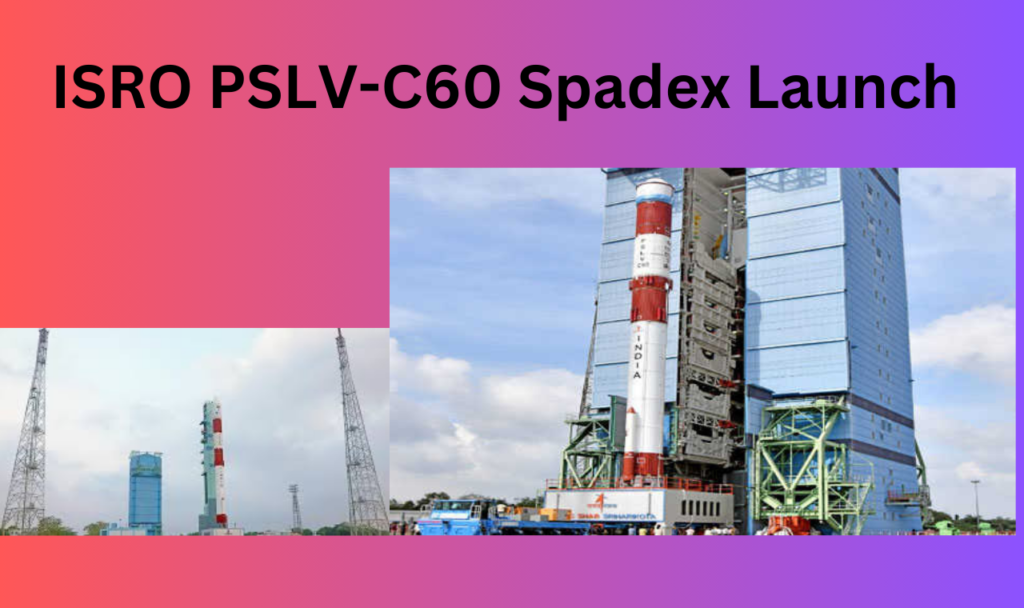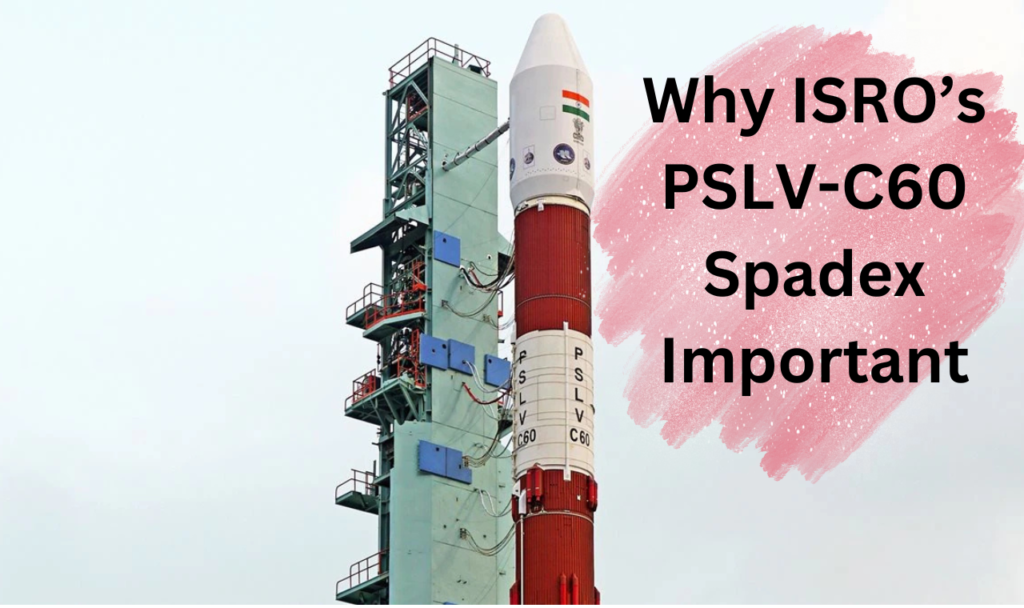ISRO PSLV-C60 Spadex Launch Live Updates: India prepares for the upcoming docking mission.
ISRO PSLV-C60 Spadex: The mission entails the deployment of two specially engineered satellites, each with a mass of approximately 220 kg, utilizing the Polar Satellite Launch Vehicle (PSLV) rocket as the launch platform. The SpaDeX mission represents a significant advancement for India, positioning the nation to become the fourth globally to master space docking technology. This capability is essential for upcoming missions that necessitate the collaboration of multiple spacecraft in orbit, including lunar exploration and interplanetary endeavors.

Also Read :https://coveragezone31.com/trai
Beyond its primary docking objectives, SpaDeX will also leverage the PSLV’s spent fourth stage as an experimental platform, referred to as POEM-4, facilitating a range of microgravity experiments. The mission will carry a total of 24 payloads, incorporating contributions from both academic institutions and startups.
Table of Contents
ISRO PSLV-C60 Spadex: The SpaDeX mission consists of two small satellites, each weighing around 220 kg. They are set to be launched aboard PSLV-C60 into a circular orbit at an altitude of 470 km, with a 55° inclination and a local time cycle of 66 days. Upon deployment, the PSLV’s precision will create a minimal relative velocity between the two satellites, designated as the Target and Chaser.
This velocity differential will lead to a gradual separation of 10-20 km between the two satellites over the course of a day. Once the desired separation is achieved, the propulsion system of the Target satellite will execute a maneuver to halt the relative drift, establishing a condition known as Far Rendezvous, where both satellites share the same orbit, velocity, and a separation of approximately 20 km.
ISRO PSLV-C60 Spadex: Through a series of maneuvers, the Chaser satellite will progressively decrease the distance between itself and the Target satellite. The inter-satellite distance will be reduced in stages, from 20 km to 5 km, then to 1.5 km, 500 m, 225 m, 15 m, and ultimately to 3 m. At the final separation of 3 m, the two satellites will successfully dock with one another.

Following the successful completion of the docking and power transfer demonstrations, the two spacecraft will undock and proceed to separate. Each satellite will subsequently commence operations of its designated payloads for the mission’s expected duration of up to two years.
ISRO PSLV-C60 Spadex: The primary aim of the SpaDeX mission is to develop and validate the technology required for the rendezvous, docking, and undocking of two small spacecraft, designated as SDX01 (the Chaser) and SDX02 (the Target), in a low-Earth circular orbit. The secondary objectives encompass:
- Demonstrating the transfer of electric power between docked spacecraft, which is vital for future applications such as in-space robotics.
- Composite spacecraft control.
- Payload operations following undocking.
ISRO PSLV-C60 Spadex: SpaDeX will consist of two 400-kg satellites, referred to as “Chaser” and “Target,” which will be launched together aboard a PSLV-class rocket. Once they reach an altitude of 400 kilometers, these satellites will execute a meticulously planned rendezvous, culminating in their autonomous docking to form a single, integrated unit in orbit.

This maneuver is essential for future initiatives requiring docking capabilities, including space station assembly, satellite refueling, and the transfer of astronauts or cargo between spacecraft.
The docking capability may also prolong the operational lifespan of geostationary satellites by enabling the replacement of their propulsion units directly in orbit. Furthermore, the mission signifies a new chapter in India’s space sector, showcasing a substantial contribution from Ananth Technologies, a private Indian firm responsible for the development of the mission’s satellites.
ISRO PSLV-C60 Spadex: The Indian Space Research Organisation (ISRO) is scheduled to launch the highly anticipated Space Docking Experiment (SpaDEX) mission on December 30, 2024. The Polar Satellite Launch Vehicle (PSLV-C60) will lift off at 10:00 PM IST from the Satish Dhawan Space Centre (SDSC) in Sriharikota. Sourcehttps://www.indiatoday.in/

